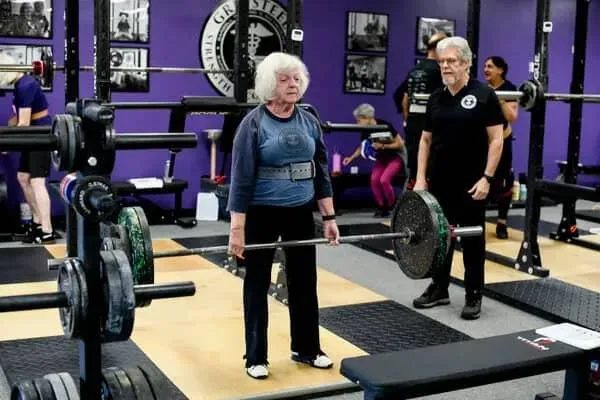
This Is When You're Too Old To Lift Weights
One of my clients recently shared a New York Times article that made me so happy I just had to pass it along.
It’s called “Pumping Iron Is Their Secret to Aging Well.” It’s a powerful reminder that you're never too old to get stronger and being older doesn't mean you’re doomed to be weak.
The article takes us inside Greysteel Strength and Conditioning, a no‑nonsense barbell gym in Farmington Hills, Michigan, where the clang of weights mixes with cheers of encouragement.
We meet an 84 year old woman who deadlifts a barbell loaded to 170 pounds--about the weight of a refrigerator. She’s been lifting for 10 years, since discovering she needed more strength after finding it hard to stand up from a kneeling position.
Today, she can deadlift nearly as much as she did before hip replacement surgery. Her personal best was 204.5 pounds and she's working her way back up
“If you can do this,” she says, “you can do a lot of challenging things.”
Strength Training, Not Just “Senior Fitness”
Greysteel was founded by Dr. Jonathon Sullivan, a former ER doctor and Marine, who saw how older adults could thrive when given real strength training, not just light weights and chair exercises. His program focuses on the basics: squat, bench press, deadlift, and overhead press, all scaled for each person’s ability, plus some cardio.
The Greysteel philosophy is this: Stronger muscles and bones are associated with longer life and better health. Heavy lifting programs are proven to build strength. If you combine those two ideas, the inevitable decline that comes with aging isn't quite so inevitable.
This isn’t about bodybuilding competitions or maxing out for Instagram. It’s about functional strength--building stronger muscles and bones so you can keep doing the things you care about, whether it's traveling, hiking, gardening, or just getting out of a chair without help.
Why It Matters
The American College of Sports Medicine recommends resistance training at least twice a week. Fewer than a third of Americans do it. For older adults, the stakes are even higher:
Lifting can help prevent or reverse sarcopenia (age‑related muscle loss).
It supports independence, balance, and bone density.
It may even reduce risk factors for chronic disease.
One 75‑year‑old Greysteel lifter was diagnosed with severe sarcopenia. She has gained 12 pounds of muscle in 10 years of lifting.
For a 98-year-old, strength was a factor in his surgeon agreeing he could survive a major operation, and it helped him recover afterward.
This 98-year-old uses a walker to approach the barbell
The article is careful to note: barbell training isn’t for everyone, and it must be scaled and supervised. But the real message is that the risk of doing nothing may be greater than the risk of moving, even with some challenge.
The benefits aren’t just physical. Greysteel members describe a supportive community that keeps them motivated and connected.
One member says, “We’re like brothers and sisters. You feel regenerated by the unity of purpose we have.”
Whether you’re 28 or 88, it’s never too late to get stronger.
People often ask if it's too late for them to start strength training.
I say, "How's your heart? Is it beating? Good. It's not too late for you!"